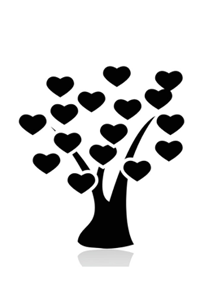
Each inhalation draws in prana from nature. (Photo courtesy of Mira Devi)
The yogic masters describe prana as the subtle current that sustains body, mind, and spirit. For most, it remains hidden beneath the surface of breath. But for those who practice deeply, prana is revealed as the very thread of consciousness itself. To know prana is to know how life moves within us and ultimately, how to transcend life’s limitations.
Prana and the Subtle Body
Classical texts such as the Prashna Upanishad and Hatha Yoga Pradipika teach that prana is not simply breath but the vital force animating the subtle body. It flows through a network of channels, the nadis, of which three are primary: ida, pingala, and sushumna.
- Ida carries cooling, lunar energy;
- Pingala carries warming, solar energy;
- Sushumna lies dormant until prana is refined and rises within it, leading to the awakening of higher consciousness.
The yogic path, then, is not only about calming the mind but also about harmonizing these currents so that prana naturally ascends through the central channel.
The Five Currents of Prana
Advanced yogic anatomy describes five main movements of prana (pancha vayus):
- Prana vayu draws energy inward, governing inhalation and perception.
- Apana vayu moves downward, responsible for elimination and grounding.
- Samana vayu balances inward and outward flow, centering energy at the navel.
- Udana vayu lifts energy upward, enabling speech, growth, and spiritual ascent.
- Vyana vayu pervades the whole body, circulating vitality everywhere.
When these currents are purified and balanced, the yogi feels light, radiant, and inwardly poised for meditation. When they are disturbed, the mind is restless, emotions fluctuate, and vitality declines.
Pranayama as the Gateway to Stillness
The Hatha Yoga Pradipika declares: “When the breath is unsteady, the mind is unsteady. When the breath is steady, the mind becomes steady.” For seasoned practitioners, pranayama is not merely health practice, but it is the deliberate refinement of prana so that one’s consciousness can rest in its source.
As prana is regulated through conscious breathing, attention shifts from the gross to the subtle. With practice, one may perceive inner sounds (nada), lights, or waves of bliss. These are not ends in themselves but signs that prana is becoming steady, paving the way for absorption in meditation. The deeper mystical truth is that when prana dissolves into the stillness of sushumna, the mind also dissolves, and the Self shines forth.
Beyond Breath: Living with Prana
While pranayama is the classical method, the Integral Yoga tradition recognizes that prana is influenced by every aspect of life. Speech, diet, mantra, service, and meditation all shape the flow of prana.
- Speech: Words either waste or conserve prana. Silence and mantra transform it.
- Diet: Pure, sattvic food refines prana, while excess or tamasic food dulls it.
- Attention: Where the mind dwells, prana follows. Every thought is an investment of energy.
- Seva (selfless service): Directing prana outward through love and service purifies the heart.
In this sense, prana is the true currency of spiritual life. To live with awareness of prana is to live with discernment about how energy is spent, conserved, and uplifted.
The Mystical Unveiling
Ultimately, the mystical nature of prana is not that it can be measured or explained, but that it is the bridge between the finite and the infinite. It is prana that sustains life, and it is prana that, when mastered, reveals what lies beyond life.
When the yogi no longer identifies with the movement of prana but with the stillness from which it arises, the journey of Yoga finds its fulfillment. In that realization, prana is recognized not as something to be controlled but as the expression of the eternal Self.
For seasoned yogis, the invitation is not simply to practice prana as technique, but to approach it as sacred communion. Each inhalation draws prana inward from the universe; each exhalation returns it to the whole. With refined awareness, one sees that prana was never separate but is the living thread that unites body, mind, and the infinite Spirit.
About the Author:
 Mira Devi is a devoted Integral Yoga practitioner and serves as assistant editor of Integral Yoga Magazine. She continues to study and practice the six branches of Integral Yoga, with a particular focus on Bhakti Yoga and Jnana Yoga.
Mira Devi is a devoted Integral Yoga practitioner and serves as assistant editor of Integral Yoga Magazine. She continues to study and practice the six branches of Integral Yoga, with a particular focus on Bhakti Yoga and Jnana Yoga.

